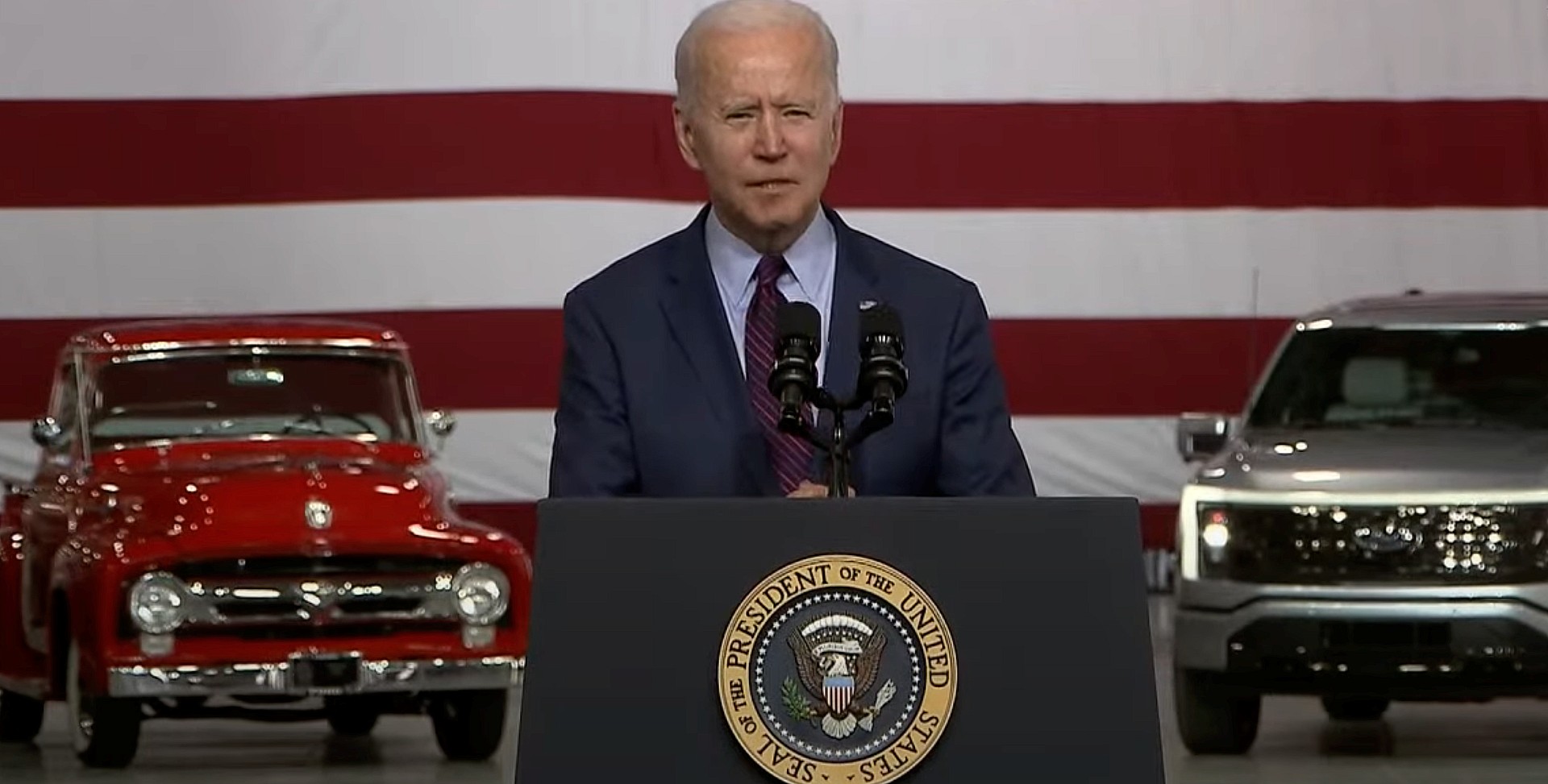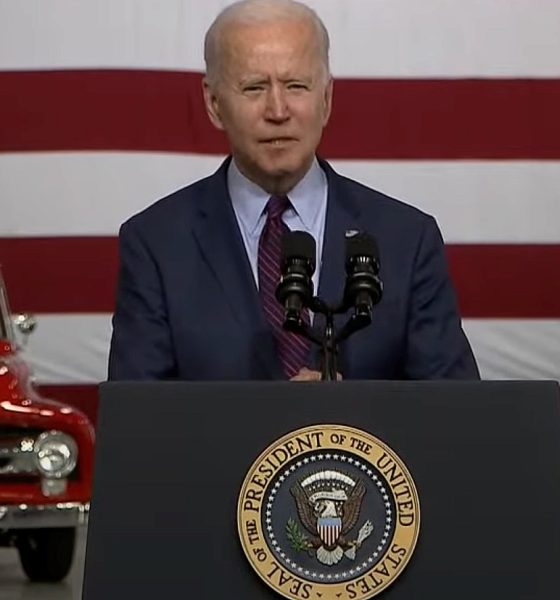

News
President Biden to announce investments that will secure Made in America mineral supply chain
President Joe Biden and the White House will announce major investments to expand the domestic critical minerals supply chain later today. The plans intend to break the United States’ dependence on China while boosting sustainable practices.
President Biden will meet with Administration and State Partners, along with industry executives, community representatives, labor leaders, and California Governor Gavin Newsom to announce the investments, the White House said today. The investments plan to hone in on the domestic production of key critical minerals and materials, which will create “good-paying, union jobs in sustainable production.”
The White House says the acquisition of the minerals is essential for nearly every part of everyday life, from entertainment to business, to transportation. While the minerals are essential for everything from household appliances to computers, President Biden’s focus on sustainability seems to be the main accelerator for the massive investments. The White House says that demand for critical minerals is set to skyrocket by between 400 and 600 percent in the next several decades, with EV battery demand increasing by 4,000 percent. Currently, the U.S. purchases many of these materials from foreign entities, especially China. “The U.S. is increasingly dependent on foreign sources for many of the processed versions of these minerals,” the White House said. “Globally, China controls most of the market for processing and refining for cobalt, lithium, rare earths, and other critical minerals.
The plan starts with a $35 million award to MP Materials on behalf of the Department of Defense “to separate and process heavy rare earth elements at its facility in Mountain Pass, California, establishing a full end-to-end domestic permanent magnet supply chain.” MP Materials plans to invest an additional $700 million to create 350 jobs by 2024.
Redwood Materials will also be at the event, discussing a pilot for its “pathways program” with Ford and Volvo for the collection and recycling of lithium-ion batteries that have reached their end-of-life.
Department of Energy Secretary Jennifer Granholm will discuss its $140 million demonstration project, funded by the Bipartisan Infrastructure Law (BIL) “to recover rare earth elements and critical minerals from coal ash and other mine waste, reducing the need for new mining.” Granholm will also detail $3 billion in funding created by the BIL which will be used to invest in refining battery materials such as lithium, cobalt, nickel, and graphite, and battery recycling facilities, creating good-paying clean energy manufacturing jobs.
The White House also will congratulate MP Materials, BHE Renewables, Controlled Thermal Resources, EnergySource Minerals, General Motors, and Tesla for their various announcements which commit to the domestic sourcing of critical minerals and materials.
- MP Materials recently announced construction of a rare earth metal, alloy and magnet manufacturing facility in Texas and a long-term supply agreement with General Motors to power the motors in more than a dozen of GM’s EV models. Production will begin next year, with capacity to produce enough magnets to power 500,000 EV motors annually.
- In addition to BHE Renewables, Controlled Thermal Resources (CTR) and EnergySource Minerals have established operations in Imperial County to extract lithium from geothermal brine. GM will source lithium for EV batteries from CTR. The companies are also working with the state-authorized Lithium Valley Commission to develop a royalty structure that would invest profits from their operations in infrastructure, health, and educational investments for the residents of the surrounding region.
- Tesla intends to source high-grade nickel for EV batteries from Talon Metals’ Tamarack nickel project under development in Minnesota. Talon Metals and the United Steelworkers (USW) have established a workforce development partnership for the project to train workers on next-generation technologies in the local community and from mining regions in the U.S. facing declining demand. As part of this partnership, Talon has agreed to remain neutral in any union organizing efforts by USW.
CNN also reports that two additional announcements not included on the White House Fact Sheet will also be included in the presentation later today
I’d love to hear from you! If you have any comments, concerns, or questions, please email me at joey@teslarati.com. You can also reach me on Twitter @KlenderJoey, or if you have news tips, you can email us at tips@teslarati.com.

News
Tesla FSD V14.2.1 is earning rave reviews from users in diverse conditions
Tesla’s Full Self-Driving (Supervised) software continues its rapid evolution, with the latest V14.2.1 update drawing widespread praise.

Tesla’s Full Self-Driving (Supervised) software continues its rapid evolution, with the latest V14.2.1 update drawing widespread praise for its smoother performance and smarter decision-making.
Videos and firsthand accounts from Tesla owners highlight V14.2.1 as an update that improves navigation responsiveness, sign recognition, and overall fluidity, among other things. Some drivers have even described it as “more alive than ever,” hinting at the system eventually feeling “sentient,” as Elon Musk has predicted.
FSD V14.2.1 first impressions
Early adopters are buzzing about how V14.2.1 feels less intrusive while staying vigilant. In a post shared on X, Tesla owner @LactoseLunatic described the update as a “huge leap forward,” adding that the system remains “incredibly assertive but still safe.”
Another Tesla driver, Devin Olsenn, who logged ~600 km on V14.2.1, reported no safety disengagements, with the car feeling “more alive than ever.” The Tesla owner noted that his wife now defaults to using FSD V14, as the system is already very smooth and refined.
Adverse weather and regulatory zones are testing grounds where V14.2.1 shines, at least according to testers in snow areas. Tesla watcher Sawyer Merritt shared a video of his first snowy drive on unplowed rural roads in New Hampshire, where FSD did great and erred on the side of caution. As per Merritt, FSD V14.2.1 was “extra cautious” but it performed well overall.
Sign recognition and freeway prowess
Sign recognition also seemed to show improvements with FSD V14.2.1. Longtime FSD tester Chuck Cook highlighted a clip from his upcoming first-impressions video, showcasing improved school zone behavior. “I think it read the signs better,” he observed, though in standard mode, it didn’t fully drop to 15 mph within the short timeframe. This nuance points to V14.2.1’s growing awareness of temporal rules, a step toward fewer false positives in dynamic environments.
FSD V14.2.1 also seems to excel in high-stress highway scenarios. Fellow FSD tester @BLKMDL3 posted a video of FSD V14.2.1 managing a multi-lane freeway closure due to a police chase-related accident. “Perfectly handles all lanes of the freeway merging into one,” the Tesla owner noted in his post on X.
FSD V14.2.1 was released on Thanksgiving, much to the pleasant surprise of Tesla owners. The update’s release notes are almost identical to the system’s previous iteration, save for one line item read, “Camera visibility can lead to increased attention monitoring sensitivity.”
News
Tesla FSD Supervised ride-alongs in Europe begin in Italy, France, and Germany
The program allows the public to hop in as a non-driving observer to witness FSD navigate urban streets firsthand.

Tesla has kicked off passenger ride-alongs for Full Self-Driving (Supervised) in Italy, France and Germany. The program allows the public to hop in as a non-driving observer to witness FSD navigate urban streets firsthand.
The program, detailed on Tesla’s event pages, arrives ahead of a potential early 2026 Dutch regulatory approval that could unlock a potential EU-wide rollout for FSD.
Hands-Off Demos
Tesla’s ride-along invites participants to “ride along in the passenger seat to experience how it handles real-world traffic & the most stressful parts of daily driving, making the roads safer for all,” as per the company’s announcement on X through its official Tesla Europe & Middle East account.
Sign-ups via localized pages offer free slots through December, with Tesla teams piloting vehicles through city streets, roundabouts and highways.
“Be one of the first to experience Full Self-Driving (Supervised) from the passenger seat. Our team will take you along as a passenger and show you how Full Self-Driving (Supervised) works under real-world road conditions,” Tesla wrote. “Discover how it reacts to live traffic and masters the most stressful parts of driving to make the roads safer for you and others. Come join us to learn how we are moving closer to a fully autonomous future.”
Building trust towards an FSD Unsupervised rollout
Tesla’s FSD (Supervised) ride-alongs could be an effective tool to build trust and get regular car buyers and commuters used to the idea of vehicles driving themselves. By seating riders shotgun, Tesla could provide participants with a front row seat to the bleeding edge of consumer-grade driverless systems.
FSD (Supervised) has already been rolled out to several countries, such as the United States, Canada, Australia, New Zealand, and partially in China. So far, FSD (Supervised) has been received positively by drivers, as it really makes driving tasks and long trips significantly easier and more pleasant.
FSD is a key safety feature as well, which became all too evident when a Tesla driving on FSD was hit by what seemed to be a meteorite in Australia. The vehicle moved safely despite the impact, though the same would likely not be true had the car been driven manually.
News
Swedish union rep pissed that Tesla is working around a postal blockade they started
Tesla Sweden is now using dozens of private residences as a way to obtain license plates for its vehicles.

Two years into their postal blockade, Swedish unions are outraged that Tesla is still able to provide its customers’ vehicles with valid plates through various clever workarounds.
Seko chairman Gabriella Lavecchia called it “embarrassing” that the world’s largest EV maker, owned by CEO Elon Musk, refuses to simply roll over and accept the unions’ demands.
Unions shocked Tesla won’t just roll over and surrender
The postal unions’ blockade began in November 2023 when Seko and IF Metall-linked unions stopped all mail to Tesla sites to force a collective agreement. License plates for Tesla vehicles instantly became the perfect pressure point, as noted in a Dagens Arbete report.
Tesla responded by implementing initiatives to work around the blockades. A recent investigation from Arbetet revealed that Tesla Sweden is now using dozens of private residences, including one employee’s parents’ house in Trångsund and a customer-relations staffer’s home in Vårby, as a way to obtain license plates for its vehicles.
Seko chairman Gabriella Lavecchia is not pleased that Tesla Sweden is working around the unions’ efforts yet again. “It is embarrassing that one of the world’s largest car companies, owned by one of the world’s richest people, has sunk this low,” she told the outlet. “Unfortunately, it is completely frivolous that such a large company conducts business in this way.”
Two years on and plates are still being received
The Swedish Transport Agency has confirmed Tesla is still using several different workarounds to overcome the unions’ blockades.
As noted by DA, Tesla Sweden previously used different addresses to receive its license plates. At one point, the electric vehicle maker used addresses for car care shops. Tesla Sweden reportedly used this strategy in Östermalm in Stockholm, as well as in Norrköping and Gothenburg.
Another strategy that Tesla Sweden reportedly implemented involved replacement plates being ordered by private individuals when vehicles change hands from Tesla to car buyers. There have also been cases where the police have reportedly issued temporary plates to Tesla vehicles.









